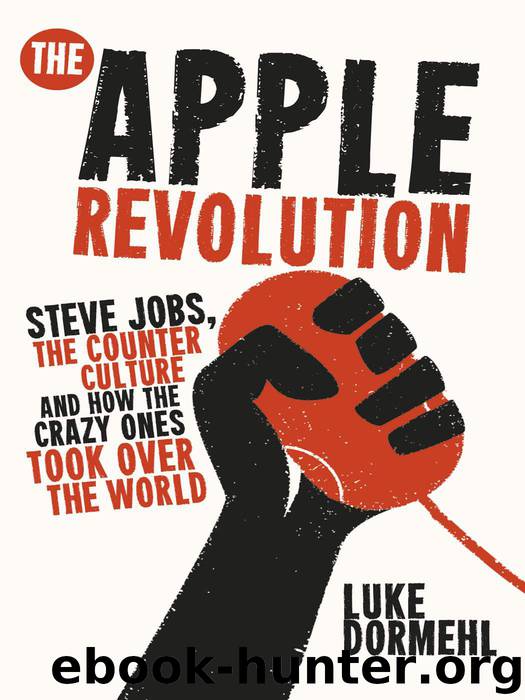The Apple Revolution: Steve Jobs, the counterculture and how the crazy ones took over the world by Dormehl Luke

Author:Dormehl, Luke [Dormehl, Luke]
Language: eng
Format: epub
ISBN: 9781448131365
Publisher: Ebury Publishing
Published: 2012-08-02T00:00:00+00:00
In his book Crossing the Chasm: Marketing and Selling High-Tech Products to Mainstream Customers, Silicon Valley consultant Geoffrey Moore refers to the bell curve of technology adoption. Essentially this is a graph that rises and falls like a hill. It is divided into five different categories: innovators, early adopters, early majority, late majority and laggards. Between each category of potential customer is a small gap where, should fatal mistakes be made, consumers might fall away altogether and never return. By far the biggest of these gaps is between the early adopters and the early majority. It represents the difference between having a product taken up by a select few intrepid pioneers and one which, at least in baby steps, begins to enter the mainstream. By the end of 1984, the Macintosh had its early adopters. As noted, many of these had bought the Macintosh on little more than the promise that it represented. But promise is not enough to get the majority of people interested. Once this first wave of early adopters had received their Macs and were happily using them at home, sales declined. As had been the case with the Apple II and VisiCalc, what was desperately needed was that killer app so important that a certain targeted niche of people simply could not live without it. Apple found what it was looking for in a desktop publishing program called PageMaker.
PageMaker was the dream of a man named Paul Brainerd. From the look of him, Brainerd seemed to be no businessman. A gangly man with unruly blond hair, he appeared the classic example of the computer geek who stumbles across a world-changing idea and implements it before anyone else has the chance. Brainerd had previously been a newspaper editor, before joining Atex, a company which produced the high-end workstations that allowed suitably trained professionals to digitally lay out display adverts for newspapers and magazines. At the time this was revolutionary. Before companies like Atex, pages for print had to be laboriously pieced together manually; headlines cut out with scissors and stuck to paper using hot wax to keep them in place. Brainerd, however, saw that this process could be taken one step further, if only someone could write the appropriate bit of software. The month the Macintosh launched, he happened to find himself out of a job. Kodak had bought out Atex and subsequently shut down its Seattle outfit. Brainerd recruited four of his former colleagues and the group set about working in a new field which Brainerd dubbed ‘desktop publishing’. They called themselves Aldus, after the fifteenth-century Venetian printer Aldus Manutius, who had invented the italic typeface and the semicolon. Brainerd put in $100,000 of his own money to help get them started and the four engineers agreed to work for half their previous salaries. The plan was to spend five years building the company up, sell for big money, and then quit the rat race. Everyone at Aldus would get rich.
With its WYSIWYG capabilities, the Macintosh seemed to be the perfect fit for desktop publishing.
Download
This site does not store any files on its server. We only index and link to content provided by other sites. Please contact the content providers to delete copyright contents if any and email us, we'll remove relevant links or contents immediately.
Hit Refresh by Satya Nadella(9038)
When Breath Becomes Air by Paul Kalanithi(8330)
The Girl Without a Voice by Casey Watson(7821)
A Court of Wings and Ruin by Sarah J. Maas(7651)
Do No Harm Stories of Life, Death and Brain Surgery by Henry Marsh(6891)
Shoe Dog by Phil Knight(5141)
Hunger by Roxane Gay(4869)
The Rules Do Not Apply by Ariel Levy(4861)
A Higher Loyalty: Truth, Lies, and Leadership by James Comey(4845)
Tuesdays with Morrie by Mitch Albom(4692)
Everything Happens for a Reason by Kate Bowler(4678)
The Immortal Life of Henrietta Lacks by Rebecca Skloot(4525)
Millionaire: The Philanderer, Gambler, and Duelist Who Invented Modern Finance by Janet Gleeson(4376)
How to Change Your Mind by Michael Pollan(4292)
All Creatures Great and Small by James Herriot(4233)
The Money Culture by Michael Lewis(4076)
Man and His Symbols by Carl Gustav Jung(4069)
Elon Musk by Ashlee Vance(4032)
Tokyo Vice: An American Reporter on the Police Beat in Japan by Jake Adelstein(3937)
